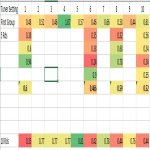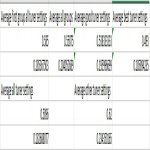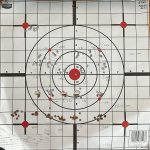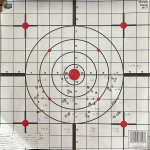Mystic Precision
CGN Ultra frequent flyer
- Location
- Summerland, BC
That is a crazy amount of data collection but I am very happy to see that these results mimic what I have seen for many years and thousands of shots downrange...
Do not lean on ES/SD to tell you anything worthwhile. Plot every shot and it will tell you all that you need to know.
There is no reliable, repeatable connection between velocity and POI.... there is also little correlation between tight SD/ES and group size. I am sure EVERYONE can toss up a target to show that the numbers agree... and just as easily, others will show that it doesn't.
THUS... IT DOESN'T. A rule that has exceptions is not a rule at all.
I saw this years back when I started being competitive in F class and have seen this time and again over the years from results posted by many other shooters.
Where this FACT started I have no idea but it is unreliable and very easily shown to fail... and thus can lead to very bad assumptions about downrange performance... usually painfully realised during a match when numbers/performance don't line up with real world targets downrange.
The best data is ALWAYS collected by testing at the furthest distances possible (yes, there will be wind... learn to read it). The closer to your maximum engagement distance, the better your data
Instead of spending big money on a fancy chronograph... spend that money on a spotting scope, a long range camera system or the best... an E target. Once you correlate EVERY bullet impact vs conditions at distance, you will be able to 'tune' your set up better and understand what works and what doesn't.
Jerry
Do not lean on ES/SD to tell you anything worthwhile. Plot every shot and it will tell you all that you need to know.
There is no reliable, repeatable connection between velocity and POI.... there is also little correlation between tight SD/ES and group size. I am sure EVERYONE can toss up a target to show that the numbers agree... and just as easily, others will show that it doesn't.
THUS... IT DOESN'T. A rule that has exceptions is not a rule at all.
I saw this years back when I started being competitive in F class and have seen this time and again over the years from results posted by many other shooters.
Where this FACT started I have no idea but it is unreliable and very easily shown to fail... and thus can lead to very bad assumptions about downrange performance... usually painfully realised during a match when numbers/performance don't line up with real world targets downrange.
The best data is ALWAYS collected by testing at the furthest distances possible (yes, there will be wind... learn to read it). The closer to your maximum engagement distance, the better your data
Instead of spending big money on a fancy chronograph... spend that money on a spotting scope, a long range camera system or the best... an E target. Once you correlate EVERY bullet impact vs conditions at distance, you will be able to 'tune' your set up better and understand what works and what doesn't.
Jerry



















































































